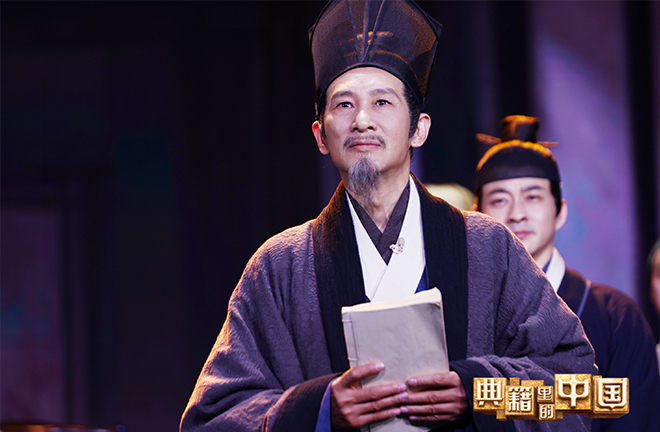Creativity key for cultural variety shows in digital era

FILE PHOTO: An actor portrays famous Ming pharmacist Li Shizhen, author of Bencao Gangmu (Compendium of Materia Medica) in the variety show China in the Classics.
With a time-honored history, the fine traditional Chinese culture is the crystallization and essence of Chinese civilization, representing the root and soul of the Chinese nation. In recent years, China’s cultural variety shows have been extremely popular and taken it upon themselves to carry forward the fine Chinese traditional culture, and have tried to combine Chinese aesthetic traditions with contemporary aesthetic pursuits to activate the vitality of Chinese culture, yielding fruitful results. A series of programs, such as Chinese Poetry Conference, National Treasure, and Everlasting Classics, China in the Classics, Chinese Archeology Assembly, have been broadcast on national television and gone viral online, stirring great enthusiasm for Chinese culture among the audience.
Many classic cultural works have been widely spread and eulogized, including Chinese characters, bronze vessels, jadeware, celadon, silk, and ancient books and records (Confucian classics, historical records, philosophical writings and miscellaneous works). Together they constitute the symbolic essence of fine traditional Chinese culture. Thus, to provide richer content, variety shows should delve into the valuable resources of Chinese civilization and further interpret the elements embodied within.
In terms of narratives, cultural variety shows should further innovate their narrative modes and present with deeper profundity. For example, with the help of drama, music, dance, calligraphy, martial arts, acrobatics and other art forms, the classics can be activated to immerse the viewers in the aesthetic experience. A typical case in point is Everlasting Classics, in which poetry is chanted along with music, an old art form passed down through the years. This not only echoes the cultural tradition of Chinese poetry starting with lyrical recitation, but also integrates the modern form of popular music. In this way, the charm of Chinese poetry is highlighted in a remarkably innovative way.
Science and technology have broken through the barriers of traditional art forms. Novel and even whimsical expressions have been brought to life, and cultural variety shows have been endowed with unlimited imagination. With the help of Augmented Reality (AR), Virtual Reality (VR), Extended Reality (XR), ring screen projection, digital image synthesis and other technologies, the program scenes are continually innovated. The shows can thus extend beyond the traditional mode of creation, and technology, which has played an auxiliary role in the past, has now transited into the role of protagonist. With the impetus from science and technology, cultural variety shows bring brand-new aesthetic experiences to the audience. For example, the men’s group dance “Dragon Flying High into the Air” vividly expresses the image of a flying dragon recorded in the I-Ching (The Book of Changes), displaying the sacrificial scenes of the ancient Dragon Boat Festival in which the flying dragon represents auspiciousness. To perceive the ancient history at a glance, to display the macro world through a speck of dust, and to imply infinity through finiteness, cultural variety shows should, by relying on technology, continuously extend the boundary of content expression in terms of aesthetic acceptance and artistic conception.
Liu Yanling is a research fellow from the Institute of Sociology at Zhejiang Academy of Social Sciences.
Edited by BAI LE

 PRINT
PRINT CLOSE
CLOSE